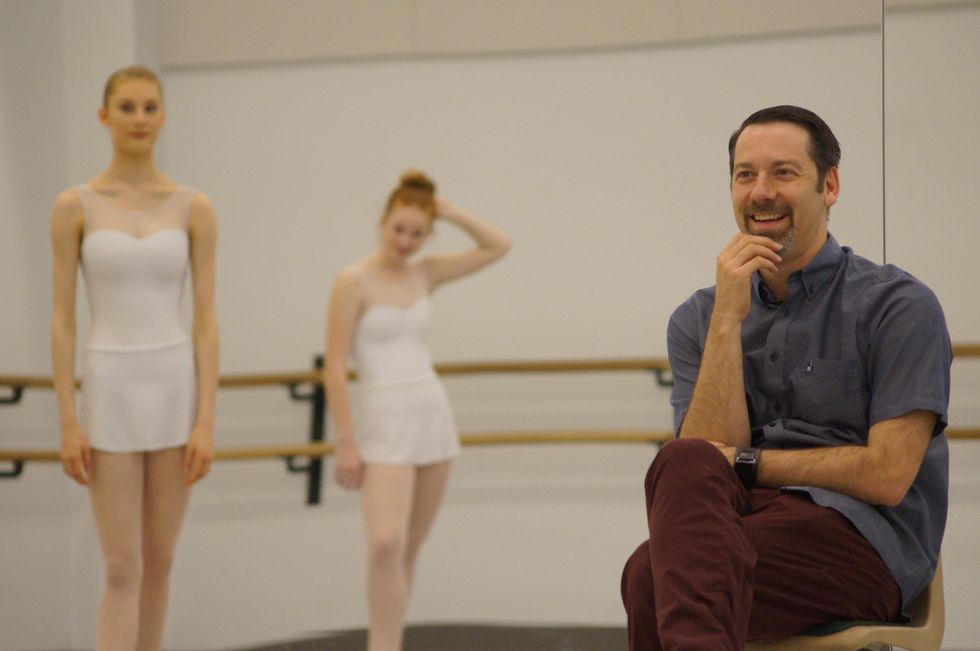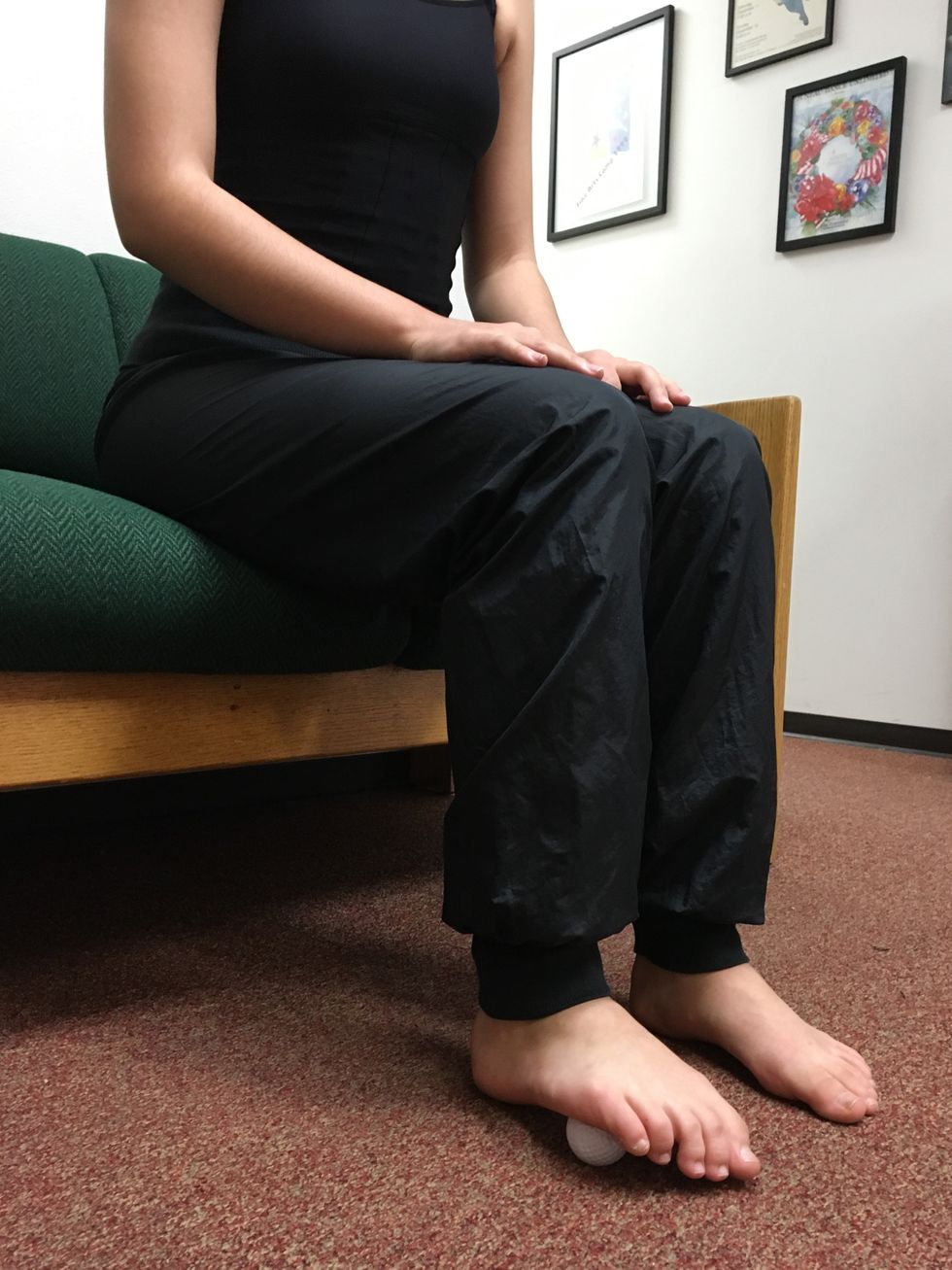
As a young ballet dancer, Peter LeBreton Merz would often get into trouble for taking his shoes off in school and picking up pencils with his toes. “I was born flat-footed,” says the current director of the Ballet West Academy. “I wanted my feet to get strong enough so I could sustain a full pointe.”
It takes time for dancers to develop clean, well-articulated footwork. Some people, like Merz, spend years working to overcome flat, stiff arches. Other dancers continuously overstretch and struggle with feet that are floppy and weak. The right balance of strength and flexibility can maximize facility and lend the necessary control for supple and expressive feet. Though the exercises offered here to combat inarticulate feet are ballet-focused, they can easily apply to other dance styles.
1. Point Correctly
Certain classical ballet positions naturally emphasize the proper shape of the foot. “Introduce sur le cou-de-pied to students around age 8 or 9,” says Merz. “It’s really good for the little ones because the ankle provides a natural sculpting tool.” With the heel placed in front of the ankle and the toes wrapped behind, the foot molds into the correct shape. “Encourage them to press their entire foot around the ankle, not just the heel,” he says.
At San Francisco Ballet School, Yuko Katsumi talks to students about pointing the foot fully—and correctly. “The joints are not knuckled; they’re lengthened,” she says. “Then think of the toes pushing down.” (She warns against thinking of the toes as straight, since that image can lead to non-energized toes.) Katsumi discourages over-pointing and sickling to make arches look better, since this practice can lead to injury. To ensure good alignment, she asks students to sit on the floor with their legs out in front of them. “I have them draw a straight line from the middle of the kneecap to the second toe, making sure the ankles are straight,” she says. Then, dancers stand up and face the mirror. They relevé in parallel and look for the same straight line, using the mirror as a guide.
 Ballet West Academy director Peter LeBreton Merz recommends paying attention to the Achilles and plantar fascia, too. Photo courtesy of Ballet West Academy.
Ballet West Academy director Peter LeBreton Merz recommends paying attention to the Achilles and plantar fascia, too. Photo courtesy of Ballet West Academy.
2. Gain Flexibility
Many dancers use foot stretchers to force their arches into better positions. But Katsumi suggests doing manual stretches instead. “It really works if you caress and massage your feet,” she says. “You can have another person help, but make sure you do it correctly.” As you stretch out the top of the foot, the heel should reach back toward the calf. Gently push the tips of the toes down. It should feel as if all of the muscles are wrapping under the foot.
Merz suggests lengthening the Achilles tendon and muscles underneath the foot, too. “If the plantar fascia is holding too much tension, there’s no way you can fully articulate your feet,” he says. Massage under the foot with a foot roller or a narrow, frozen water bottle. “Rolling on a long tubular icicle will help reduce inflammation in the tissue and give a deeper stretch,” he says. Merz also recommends using a golf ball to roll out the plantar fascia (see photo below). “Sit in a chair so your femur is extended 90 degrees out from your body, and your tibia and fibula are 90 degrees down from your knee,” he says. “Start with the ball at the base of your heel and move it up toward each metatarsal, stopping at the base of the toe.” If you feel any tight spots, let the weight of your foot melt onto the ball for three counts. “It’s an aggressive release, so I only recommend it two to three times per week,” says Merz.
 Merz’s plantar fascia exercise
Merz’s plantar fascia exercise
3. Build Strength
Some dancers stretch their feet incessantly, thinking that flexible feet will make better feet. But overstretching can lead to weakness or injury. “You need strength, too, or else you won’t be able to use your feet,” says Justin Koertgen, a dance instructor at Interlochen Center for the Arts. Koertgen focuses on slow tendu combinations in class, making sure students work through the ball of the foot before they reach a full pointe. “The more the dancer can strengthen the intrinsic muscles along the bottom of the foot, the more they’ll be able to use everything they have,” he says. Teach various ways to get to the full pointe, such as doing a tendu slowly and moving fully through the foot, as well as getting the foot to a full tendu quickly, in one second.
Students can take their shoes off and practice doming (spreading the toes out and lifting the metatarsals up). “Make sure they’re not clenching their toes, but lifting the arch of the foot,” says Katsumi. She also has students stand barefoot in a circle and make “squeaky sounds” with their big toes. “Curve the big toe on the floor and make the loudest noise you can,” she says. “The movement activates the intrinsic muscles and is a really good strengthener.” Both Koertgen and Merz recommend that dancers stand on a washcloth and scrunch the towel under the toes. Then they can spread the towel out again with their toes, working the muscles both on top and bottom of the foot.
TheraBand exercises can help with control and stability, if they’re done with proper alignment. Dancers should keep their ankles straight and stationary as the foot rolls through half pointe to full pointe, and reverse. Students can also wear deshanked pointe shoes for barre, working through the extra resistance to gain strength. “Some feet will not stretch completely,” says Katsumi, “but how dancers use their feet will help the way they look.”
3 Exercises for Better Foot Articulation
- Have young students walk in a circle, toe-ball-heel. They can use these “ballet walks” when they enter and leave the studio, and while transitioning between exercises. “This practice encourages them to think about how they use their feet,” says Peter LeBreton Merz, director of Ballet West Academy.
- Relevé to full pointe, lower to half pointe, push back up to pointe and then roll down to plié. “Mid-foot articulation in a pointe shoe doesn’t feel natural, so dancers should do a lot of these kinds of exercises,” says Merz.
- Have students lie on their backs with their feet flat against a wall in demi-plié. “I make it a competition to see who can push the furthest away from the wall, sliding on their backs,” says Justin Koertgen, dance instructor at Interlochen Center for the Arts. “Then I have them look at their feet, to demonstrate how much they point when the dancers actually push with them.”




